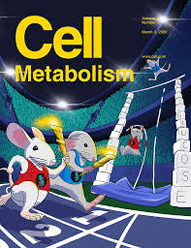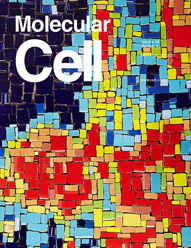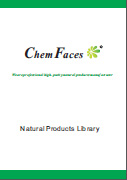| In vitro: |
| Archives of Microbiology,1994.161:168–175. | | Formation of L-alanine as a reduced end product in carbohydrate fermentation by the hyperthermophilic archaeon Pyrococcus furiosus.[Reference: WebLink] |
METHODS AND RESULTS:
The hyperthermophilic archaeon Pyrococcus furiosus was found to form substantial amounts of L-alanine during batch growth on either cellobiose, maltose or pyruvate. Acetate, CO2 and H2 were produced next to alanine. The carbon- and electron balances were complete for all three substrates. Under standard growth conditions (N2/CO2 atmosphere) an alanine/acetate ratio of about 0.3 was found for either substrate. The alanine /acetate ratio was influenced, however, by the hydrogen partial pressure. In the presence of S0 or in coculture with Methanococcus jannaschii this ratio was only 0.07, whereas under a H2/CO2 atmosphere this ratio could amount up to 0.8. Alanine formation was also aflected by the NH sup+inf4concentration, i.e. below 4 mM, NH sup+inf4becomes limiting to alanine formation. Alanine formation was shown to occur via an alanine aminotransferase, which exhibited a specific activity in cell-free extract of up to 6.0 U/mg (90°C; direction of pyruvate formation). The alanine aminotransferase probably cooperates with glutamate dehydrogenase (up to 23 U/mg; 90°C) and ferredoxin: NADP+ oxidoreductase (up to 0.7 U/mg, using methyl viologen; 90°C) to recycle the electron acceptors involved in catabolism.
CONCLUSIONS:
Thus, the existence of this unusual alanine-forming branch enables P. furiosus to adjust its fermentation, depending on the redox potential of the terminal electron acceptor. |
|

 Cell. 2018 Jan 11;172(1-2):249-261.e12. doi: 10.1016/j.cell.2017.12.019.IF=36.216(2019)
Cell. 2018 Jan 11;172(1-2):249-261.e12. doi: 10.1016/j.cell.2017.12.019.IF=36.216(2019) Cell Metab. 2020 Mar 3;31(3):534-548.e5. doi: 10.1016/j.cmet.2020.01.002.IF=22.415(2019)
Cell Metab. 2020 Mar 3;31(3):534-548.e5. doi: 10.1016/j.cmet.2020.01.002.IF=22.415(2019) Mol Cell. 2017 Nov 16;68(4):673-685.e6. doi: 10.1016/j.molcel.2017.10.022.IF=14.548(2019)
Mol Cell. 2017 Nov 16;68(4):673-685.e6. doi: 10.1016/j.molcel.2017.10.022.IF=14.548(2019)

